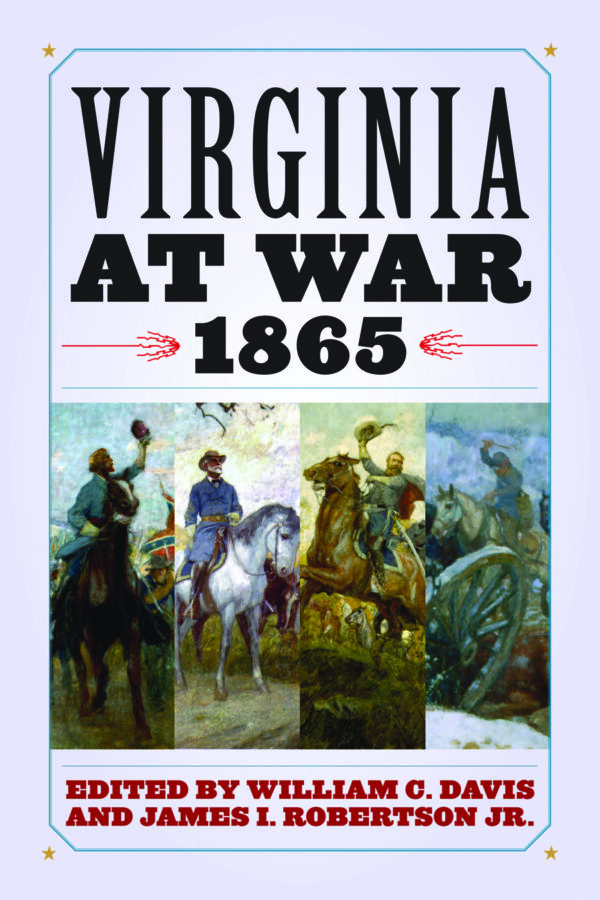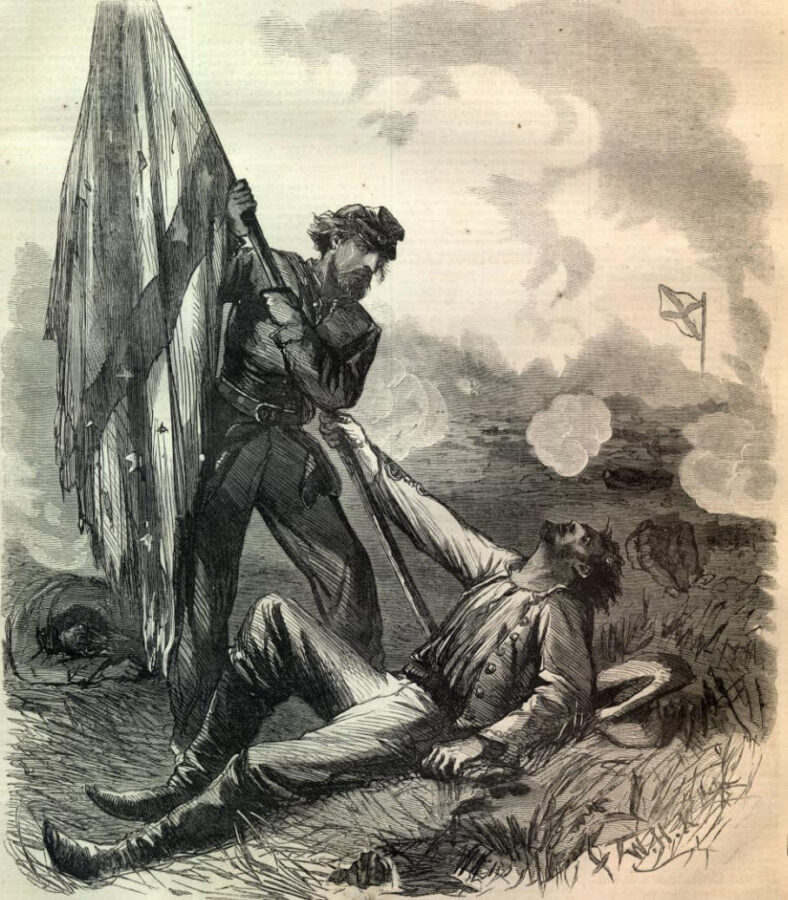Virgina at War, 1865 edited by William C. Davis and James I. Robertson. University of Kentucky Press, 2011. Cloth, ISBN: 0813134684. $40.00.
 The fifth and final volume of Virginia at War is the best of the series. This treatment of 1865 in the Old Dominion is crisply edited; focused mostly on a single year of the war, unlike some of the earlier volumes; and while only 242 pages including preface and index, it is a meaty contribution to Civil War studies. The eight original essays average but 14 pages of text, yet all of them leave the reader wanting more. Copious notes, conveniently placed at the end of each chapter, are alone worth the price of the book, which will appeal both to Civil War scholars, and to general readers new to the conflict. The former will read the essays, analyze the conclusions drawn from the historiographically current citations, and mine both for their own research. The latter will pursue further reading on what may become an engrossing hobby, such as wartime music, by finding books and articles cited in the notes.
The fifth and final volume of Virginia at War is the best of the series. This treatment of 1865 in the Old Dominion is crisply edited; focused mostly on a single year of the war, unlike some of the earlier volumes; and while only 242 pages including preface and index, it is a meaty contribution to Civil War studies. The eight original essays average but 14 pages of text, yet all of them leave the reader wanting more. Copious notes, conveniently placed at the end of each chapter, are alone worth the price of the book, which will appeal both to Civil War scholars, and to general readers new to the conflict. The former will read the essays, analyze the conclusions drawn from the historiographically current citations, and mine both for their own research. The latter will pursue further reading on what may become an engrossing hobby, such as wartime music, by finding books and articles cited in the notes.
Co-editors Jack Davis and Bud Robertson set the stage in their preface, explaining that by the start of 1865 “Confederate Virginia was little more than Richmond and Petersburg, and a scattering of supply depots and bases on the Southside at Danville and Lynchburg” (vii).
Chris Calkins, perhaps the foremost authority on the military aspects of the last months of the war in the Commonwealth, provides a clear and detailed overview of “Land Operations in Virginia in 1865.” There is no better summary of this length.
Ginette Aley has written a moving and eloquent account of black and white families on the home front, though her coverage is broader than 1865 alone. Her quotations are pungent and apt. Pervasive shortages of mundane domestic items, such as kerosene and candles, curtailed much of family and community life, including worship.
Jaime Amanda Martinez also attempts less successfully to cover the state’s economy throughout the conflict. Had the essay been limited to 1865 there would have been almost nothing to write about. From primary sources she extracts some pithy exchanges and revealing episodes, like those of Appomattox County’s Thomas S. Bocock. In April 1865 he sold a quantity of grain to his neighbor, Col. Thomas H. Flood, accepting as compensation not Confederate paper but slaves. Within a month he was apparently trying to get out of the deal, as the slaves were now free. Bocock must have been delusional because after Lee’s surrender he agreed to purchase sixteen more slaves. Martinez is less sure-footed on other subjects. Her discussion of the 1863 Richmond bread riot is confused, with multiple errors in less than two paragraphs.
One of the best essays is E. Lawrence Abel’s on music and entertainment. Using a rich variety of sources he succeeds in capturing some of the flavor of life away from the trenches, though he focuses almost entirely on Richmond throughout the war, and not Virginia in 1865. Since Alexandria was taken immediately, Norfolk in May 1862, and Fredericksburg largely destroyed at the end of that year, by 1863 there were few cities left for Confederate diversions, and most towns were not large enough to support such frivolity.
F. Lawrence McFall, Jr., a leading authority, describes the brief experience of Danville as the Confederacy’s last real capital, before the officers of the vanished government scattered into small bands of fugitives on the road to Greensboro or elsewhere. He captures some of the flavor of a government and nation passing into oblivion.
Kevin Levin has written a haunting account of the demobilization of Lee’s army, which has a collection of details not found in many far longer accounts. Conditions in much of Virginia were chaotic, verging on anarchy, and civilian authorities, often working with the Union army, struggled to maintain order against the lawlessness of newly emancipated slaves and “renegade Confederates” (91). Other discharged Rebels and some local militia also helped restore some semblance of calm, but Levin argues that ending the Civil War with Appomattox, or retelling sentimental stories of reunion, reduces the real connections between the conflict and the challenges of Reconstruction.
Ervin L. Jordan, Jr., in one of the longest essays, provides a detailed account of Virginia’s African-Americans and what he calls the “Unfinished Emancipation of 1865” (103). He describes the actions of well-known black aristocrats in Richmond, and ordinary rural freedpersons, along with those of their former owners, some of whom were registering “slave births” as late as December 1865 (108). In what has become a familiar story for slavery scholars, the racial mystique of slave-owners shattered when their most loyal chattel, the house servants, were the first to leave them.
John M. McClure’s chapter on the aftermath is a superb coda to these essays, and is remarkably detailed and comprehensive, with details on the war’s impact; the reactions of whites and blacks to Union victory; and early administrative decisions by northern officials, including those of the Freedmen’s Bureau, especially Orlando Brown; generals Edward O. C. Ord and Alfred Howe Terry; and Governor Francis H. Pierpont. The latter’s performance was particularly poor, and may have doomed any chance of Reconstruction being even modestly successful in Virginia.
As a dessert co-editor Bud Robertson presents in 53 pages the last installment (August 1864-May 1865) of Judith Brockenbrough McGuire’s Diary of a Southern Refugee during the War, first published in 1867. Supporting her text is a brief introduction and an afterword, and 132 notes. The entire diary, with all of the annotations, should now be published from the excerpts in this and the earlier volumes of Virginia at War.
There is no other state series like this one on the Old Dominion. It is unlikely to have a rival. One hopes that anyone interested in the Civil War, the South, or Virginia, the most important state in the conflict, will read this engrossing volume.
Michael B. Chesson is Founding Professor at the American College of History and Legal Studies.
